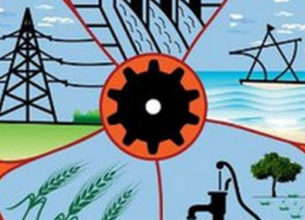ONLY 10 OF 100 SEWAGE PROJECTS ON GANGA HAVE BEEN COMPLETED
04, May 2019

Prelims level : Environment
Mains level : Technology, Economic Development, Bio diversity, Environment, Security and Disaster Management
Why in News:
- Only 10 of the 100 sewage infrastructure projects commissioned after 2015 have been finished under the Namami Gange mission, according to records.
Details:
- Commissioning of sewage treatment plants (STP) and laying sewer lines are at the heart of the mission to clean the Ganga.
- Nearly ₹23,000 crore has been sanctioned of the ₹28,000 crore outlay for sewage management work.
- River-front development, cleaning Ghats and removing trash from the river — the cosmetic side of the mission — make up about for ₹1,200 crore of the mission outlay.
- Uttar Pradesh, responsible for about three-fourths of the inadequately treated industrial waste and municipal sewage, had 18 pre-2015 STP and sewage infrastructure projects commissioned. The incomplete projects are reflected in the river quality. None of the towns through which the Ganga courses through has water fit for bathing or drinking, according to water monitoring reports by the State and Central Pollution Control Board.
Hybrid Annuity-PPP model
- The Union Cabinet had approved to Hybrid Annuity-PPP model with 100% central sector funding. Under this model, development, operation and maintenance of STPs will be undertaken by Special Purpose Vehicle (SPV) created by winning bidder at local level
National Mission for Clean Ganga
- NMCG is a river cleaning project.
- NMCG is the implementation wing of National Council for Rejuvenation, Protection and Management of River Ganga
- It was established in 2011 as a registered society under Societies Registration Act, 1860.
- It has a two-tier management structure and comprises of Governing Council and Executive Committee.
- The Union Cabinet has recently approved changes allowing the National Mission for Clean Ganga to fine those responsible for polluting the river. Earlier this power was vested solely with the Central Pollution Control Board. The power to fine the polluters is derived from the Environment Protection Act.







